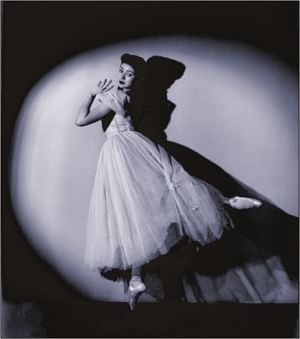Margot Fonteyn: An enduring appeal

Margot Fonteyn by Chambré Hardman
Even 17 years after her death, exquisitely graceful ballerina Margot Fonteyn remains a role model for many upcoming talents. Who of the last generation can forget her inimitable portrayals such as that of Snowflake in The Nutcracker Suite (1934), Princess Aurora in The Sleeping Beauty (1949) Juliet in Romeo and Juliet (1965) or in many other productions -- among them Giselle and Apparitions (1936), Marguerite and Armand (1963) or Paradise Lost (1967)?
Margot is also famous for her longstanding partnership with Rudolf Nureyev. In 1961 he defected to the West from the Soviet Union and the following year he and Margot first appeared on stage together in Giselle. It was a major success. During the curtain calls, Nureyev dropped to his knees and kissed Margot's hand, setting the seal on their on and offstage partnership, which lasted until she bowed out finally in 1979. In a documentary about Margot, Nureyev said that they danced with “one body, one soul” and that Margot was “all he had, only her.” When she was under treatment for cancer, the 19 year younger Nureyev paid many of her medical bills and visited her frequently, despite his hectic schedule as a performer and choreographer, as well as his affliction with HIV (he succumbed to AIDS in 1993).
Margot was born Margaret (Peggy) Hookham, the daughter of an English father and an English mother, with Brazilian ancestry (she was the daughter of Brazilian businessman Antonio Fontes). At the beginning of her career, she transformed Fontes into Fonteyn (a surname also adopted by her brother) and Margaret into Margot. Her mother enrolled both the children for ballet classes when they were very young -- hence her development into a prima ballerina.
While still a teenager, Margot joined the Royal Ballet (then known as the Sadler'sWells Theatre), after training with some of the well-known teachers of the day -- Olga Preobrajenskaya and Mathilde Kschessinskaya, both of whom trained under Marius Petipa himself. Success came to the ballerina by 1939 when she was the company's star and the inspiration for many of Sir Fredrick Ashton's ballets, such as Daphnis and Chloe and Sylvia. Other commendable works were The Sleeping Beauty and Cinderella. Margot also worked with the choreographer Roland Petit and later the famous American dancer and choreographer Martha Graham. In 1949, the Royal Ballet toured the US and Margot became an instant celebrity.
Before working with Nureyev, she had other partnerships -- In the 1940s she and Robert Helpmann formed a very successful dance partnership and the duo toured together for several years. In the 1950s, she danced with Michael Somes. However, her greatest partnership with Nureyev surfaced at a time when many (including the head of the Royal Ballet, Ninette de Valois) thought she was about to retire).
In 1954 she was made a dame. In 1955, after a long but failed relationship with composer Constant Lambert, she married Dr Roberto Arias, a Panamanian diplomat to London. His roving eye was a source of friction in the early years of their marriage. She was arrested when he attempted a coup against the Panamanian government. Worse was to follow -- in 1965 a rival Panamanian politician shot Arias, making him a quadriplegic for the remainder of his life.
It was largely because of the cost of Arias' medical care that Margot continued with her career until 1979 when she was 60 years old. This, despite her own troublesome arthritic foot. When she finally retired, the Royal Ballet accorded her with the title of 'Prima Ballerina Assoluta'. Her last years were spent in Panama, remaining committed to Arias, partly because she was very devoted to his children from a previous marriage. To help her meet the doctor's bills, the Royal Ballet held a special gala in 1990 for her benefit. Shortly after he died, she was diagnosed with a cancer that proved fatal.
Margot is remembered for her insightful sayings, among them: “Genius is another word for magic, and the whole point of magic is that it is inexplicable.” And anyone who had the chance to see her on stage would agree that the magic she wove with her art would give her an enduring appeal the world over.
Compiled by Cultural Correspondent

 For all latest news, follow The Daily Star's Google News channel.
For all latest news, follow The Daily Star's Google News channel. 



Comments